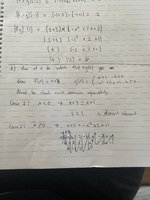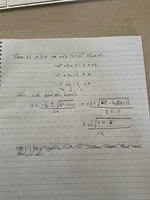bagofchips123
New member
- Joined
- Apr 11, 2021
- Messages
- 14
Hi, I'm struggling to solve part b of this question. I understand I'm trying to find all values x for which f(x)=g(x), and need to look at each domain separately. In case 1 I discovered their is no intersection point, is that correct? Secondly, for case 2 I feel I'm required to use the quadratic formula however can't quite work out what the answer is, thus wether or not there is an intersection point. Thanks heaps 



